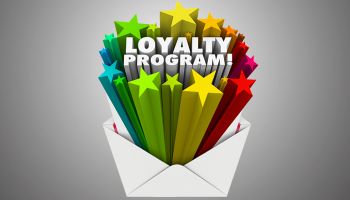Customer engagement done right
3 technologies help build customer engagement
- |
- Written by Lisa Joyce

Mobile technology is changing the rules for customer engagement.
As a result, banks are looking at leveraging mobile devices in “location-aware” and “context specific” ways to move beyond just transactions and offer services that elevate customer engagement such as using tablets, beacon technology, and innovative rewards programs.
Here are three examples of technologies that banks should consider to deepen customer engagement.
Strategy 1: Take out the tablets
The branch has always served as the natural hub of customer engagement and banks have been working to better engage with customers at the branch.
Umpqua Bank has been at the forefront of the notion that a branch visit can be an experience. At the bank’s flagship Seattle store, customers engage with bank employees and the community-at-large in a number of ways. The store has a large projection screen perfect for movies, gaming, and presentations. When customers enter the store, they see The Catalyst Wall, a motion-detecting interactive touch screen that displays the bank’s products and services.
Customers can reserve one of the store’s Exchange Rooms, which are equipped with wall-mounted LCD screens and Skype cameras.
Umpqua has used technology to create a unique customer experience, but banks don’t need to invest heavily in technology to improve the customer experience in their branch. The ubiquitous tablet can make a big impact. And consumers willing to use tablets for banking, perhaps even more than mobile phones: According to the 2013 Fiserv Consumer Trend Survey, more half of tablet owners use their device for banking.
Progressive banks are beginning to incorporate tablets into the branch experience as well. Suppose a customer visits a bank branch to apply for a mortgage. The customer walks over to a welcome area equipped with several tablets. The customer taps a mortgage icon and inputs information such as term of the loan and amount to interactively compare monthly payments and total interest paid. He can even watch a short video describing loan types. Graphics and interactive tools make the experience fun and more interesting, and engage customers as never before.
Strategy 2: I recognize you
When Lord & Taylor customers using the SnipSnap app approach within 500 meters of the department store, they get a text message on their mobile device for a mystery coupon worth between 15% and 25% off their purchase.
The customer is engaged even before they say “hello” to an employee.
But it’s not just large retailers that can use this technology.
Last October, First Data announced that it was rolling out beacon technology to the more than 1,000 customers that use Perka, First Data’s mobile loyalty solution designed for small and mid-sized businesses.
The beacon communicates wirelessly with the Perka app and automatically checks a customer into a store without having to launch a loyalty app on their Apple or Android mobile device. The beacon uses rolling-code technology to make it more difficult for someone to hack or spoof the device.
Strategy 3: Rethink Rewards
Rewards programs are nothing new and many banks offer some sort of rewards scheme to boost customer loyalty and engagement. But in addition to rewarding points for dollars spent on a credit card, rewards are becoming more innovative. Some examples:
• At Eastern Bank, a Boston-headquartered savings bank with assets of $8.7 billion, customers who open a free checking account with a direct deposit of at least $100 receive a free four-hour house cleaning.
• Capital One’s Purchase Eraser lets customers make a travel-related purchase with their rewards card, then wipe out the cost of that purchase from their statement using their accrued miles.
• Harleysville Savings Bank, Harleysville, Pa.’s Tuition Rewards are scholarship points that serve as a discount off the price of full tuition.
However, banks should look at their rewards programs more strategically, notes Paul Schaus, president and CEO of CCG Catalyst Group. Rather than succumb to what Schaus calls “peer pressure,” banks should evaluate their programs to determine if the program is indeed having the intended results.
“If you are trying to attract a certain type of customer, why would you offer a broad-based rewards program? Design a rewards program specifically for that customer segment,” he advises.
That said, Schaus is generally is not sold on the value of rewards programs, saying that banks often give the programs credit where none is due. For example, a bank may report that its debit card usage increased 24% after offering a cash-back reward on debit accounts, but it could just be that debit card usage would have increased even without the rewards program.
Tagged under Lines of Business, Retail Banking, Customers, Feature, Feature3,














